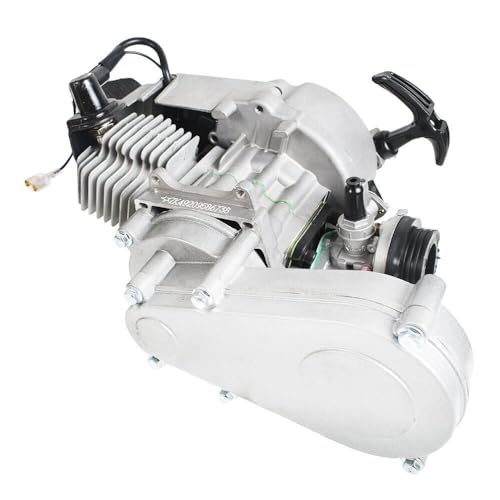Cactus Jack
Master Spanner Spinner
- Joined
- Jan 18, 2007
- Messages
- 2,690
- Reaction score
- 49
Nitrous oxide would be best injected (along with carefully metered additional fuel) via a solenoid activated spray bar between the carb and the inlet manifold ! Since it works by increasing the density of the air BEFORE it enters the engine , the closer to the carby it is , the better it will work . You want to get the air cold and dense before it passes the reeds or inlet valve - then once it's in there - it's trapped and is forced to do its' job of boosting cylinder pressure when burnt !
The engine will still draw in the same volume of air/fuel mix as normal - only the colder charge will be denser and will expand to a greater volume when heated by combustion than it would if it was at normal temperature . Mechanical blowers work by pumping a greater volume of air/fuel mix into an engine at boosted pressure levels and at normal temperature ! Nitrous oxide injection compacts the fuel /air mix by chemically reducing its' temperature which in turn increases it's density at normal atmospheric pressure .
A reed valve is simply a one way valve - the intake charge opens the reed petals in the direction of flow but forces them closed if the flow tries to reverse - so once the denser charge passes the reeds , it doesn't matter if it starts expanding in the cases because the increased pressure would still make it to the cylinder .
You have to remember that everything is happening thousands of times per minute so there isn't much time for the charge to start heating up before it reaches the cylinder and is ignited ! IF the oil did happen to increase viscosity due to lowered temperature - that would actually be a bonus because the increased film strength would help to keep metal parts such as the bearing rollers wedged away from the crank pin and the piston away from the cylinder wall - reducing wear and friction !
2 strokes are poorly lubricated as it is - so you have to ensure that they don't run too rich because the fuel "washes" the oil off the parts - weakening it's ability to keep them away from each other ! In a well tuned 2 stroke engine the fuel turns into a gas and the oil falls out of suspension - adhering to the working components . The spinning crank keeps everything churned up in the cases .
It would be safe to say that the use of nitrous oxide in a 2 stroke engine would require a fine balancing act as far as tuning goes ~ there'd be a fine line between life and death of the engine !
The engine will still draw in the same volume of air/fuel mix as normal - only the colder charge will be denser and will expand to a greater volume when heated by combustion than it would if it was at normal temperature . Mechanical blowers work by pumping a greater volume of air/fuel mix into an engine at boosted pressure levels and at normal temperature ! Nitrous oxide injection compacts the fuel /air mix by chemically reducing its' temperature which in turn increases it's density at normal atmospheric pressure .
A reed valve is simply a one way valve - the intake charge opens the reed petals in the direction of flow but forces them closed if the flow tries to reverse - so once the denser charge passes the reeds , it doesn't matter if it starts expanding in the cases because the increased pressure would still make it to the cylinder .
You have to remember that everything is happening thousands of times per minute so there isn't much time for the charge to start heating up before it reaches the cylinder and is ignited ! IF the oil did happen to increase viscosity due to lowered temperature - that would actually be a bonus because the increased film strength would help to keep metal parts such as the bearing rollers wedged away from the crank pin and the piston away from the cylinder wall - reducing wear and friction !
2 strokes are poorly lubricated as it is - so you have to ensure that they don't run too rich because the fuel "washes" the oil off the parts - weakening it's ability to keep them away from each other ! In a well tuned 2 stroke engine the fuel turns into a gas and the oil falls out of suspension - adhering to the working components . The spinning crank keeps everything churned up in the cases .
It would be safe to say that the use of nitrous oxide in a 2 stroke engine would require a fine balancing act as far as tuning goes ~ there'd be a fine line between life and death of the engine !








































![LISEN Bike Phone Holder, [2025 Upgrade] Motorcycle Phone Mount, Bicycle Phone Holder, Handlebar Phone Mount, Dirt Bike Accessories, Bicycle Accessories, Gifts for Men for iPhone 4.7-7" Phone, Black](https://m.media-amazon.com/images/I/41FJGrZQ5ML._SL500_.jpg)


![Bike Phone Mount Holder, [Camera Friendly] Motorcycle Phone Mount for Electric Scooter, Mountain, Dirt Bike and Motorcycle - 360° Rotate Suitable for iPhone & Android Smartphones from 4.5-7.0 inches](https://m.media-amazon.com/images/I/51ZirRrsA+L._SL500_.jpg)